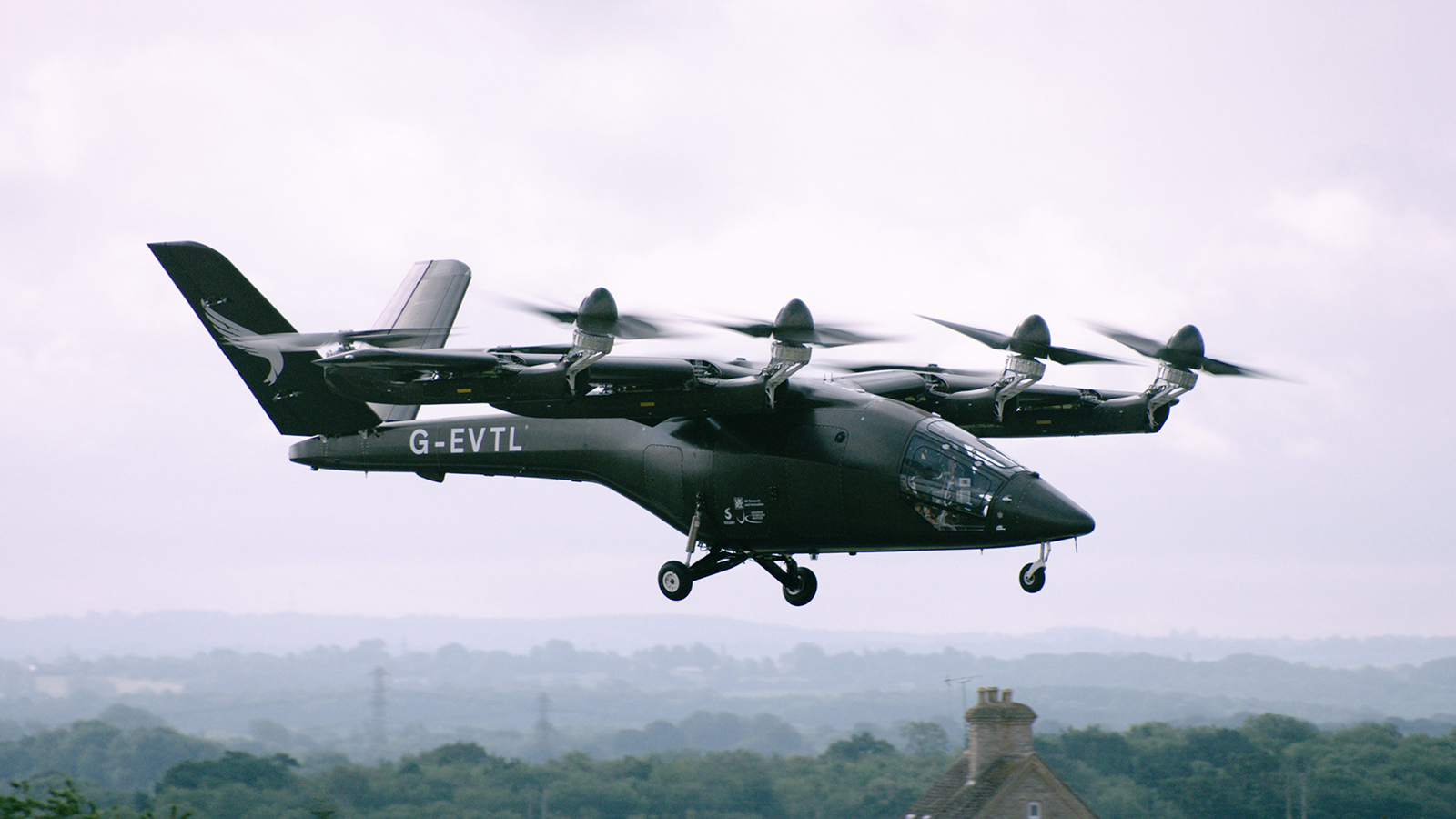Stay Up to Date
Submit your email address to receive the latest industry and Aerospace America news.
Photos show crumpled aircraft
A remotely piloted air taxi prototype appears to have crashed during testing at the company’s Flight Test Centre at Cotswold Airport, based on photos posted online by local journalists.
Vertical Aerospace confirmed that its VX4 all-electric “experimental prototype” was involved in an “incident” at the test center, and said “there were no injuries.” The statement was made in a note filed today to the U.S. Securities and Exchange Commission. Vertical, located in Bristol about an hour from the test site, is required to reveal “results of operations” and other significant developments to SEC because its shares are traded on the New York Stock Exchange.
“Our flight test programme is designed to establish the limits of the aircraft’s performance, and the incident occurred during an uncrewed test of the aircraft’s maneuverability during a motor failure test scenario, which is a key requirement to progress to crewed operations,” the company told SEC.
Photos showed the VX4 crumpled and tilted starboard on the edge of a runway with a broken port wing.
TEXT OF VERTICAL’S NOTE TO SEC
On Wednesday August 9, 2023, Vertical Aerospace Ltd.’s experimental prototype aircraft was involved in an incident during flight testing at its Flight Test Centre at Cotswold Airport, UK. The aircraft was remotely piloted and there were no injuries.
Our flight test programme is designed to establish the limits of the aircraft’s performance, and the incident occurred during an uncrewed test of the aircraft’s maneuverability during a motor failure test scenario, which is a key requirement to progress to crewed operations. We are working closely with the relevant authorities.
Vertical planned to conduct “crewed thrustborne” flight tests later this year with the aircraft, the company said on Aug. 3, when it announced to shareholders that assembly of a second full-scale VX4 “is commencing.”
The next VX4 “will have greater capabilities than our first prototype, including improved range and higher performance, particularly in hover,” wrote CEO Stephen Fitzpatrick.
The VX4 is a lift-plus-thrust electric craft, meaning four rotors arrayed along the trailing edge of the 15-meter-wide main wing provide only lift and are halted and stowed aerodynamically for forward flight, while four rotors in the front tilt for forward flight. The aircraft has a pilot cockpit area and a seating area for four passengers.
Vertical ranks 12th out of the 28 companies on SMG Consulting’s AAM Reality Index. Companies are ranked according to funding, experience and milestones reached toward certification and commercialization.
The crash would put “kind of a parking brake on the test program,” Sergio Cecutta of SMG told me. “But [Vertical managers] are quite advanced in getting all the parts from their suppliers to build their second aircraft, which will be more representative of the final one.”
Vertical announced the first untethered test flight, also remotely piloted, of the VX4 in July, saying the aircraft in June had lifted, hovered, flown and landed, all by the thrust of the aircraft’s propulsion system and powered only by onboard lithium-ion battery packs. It reached a speed of about 70 kilometers per hour.
About paul brinkmann
Paul covers advanced air mobility, space launches and more for our website and the quarterly magazine. Paul joined us in 2022 and is based near Kennedy Space Center in Florida. He previously covered aerospace for United Press International and the Orlando Sentinel.
Related Posts
Stay Up to Date
Submit your email address to receive the latest industry and Aerospace America news.




